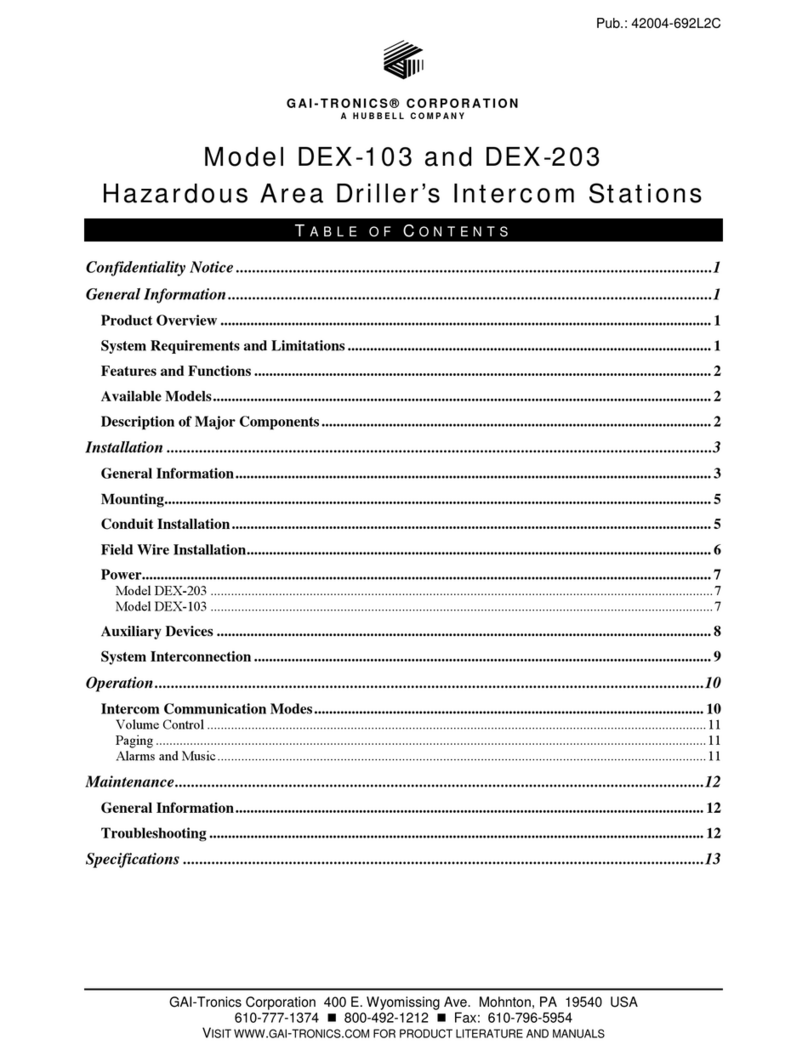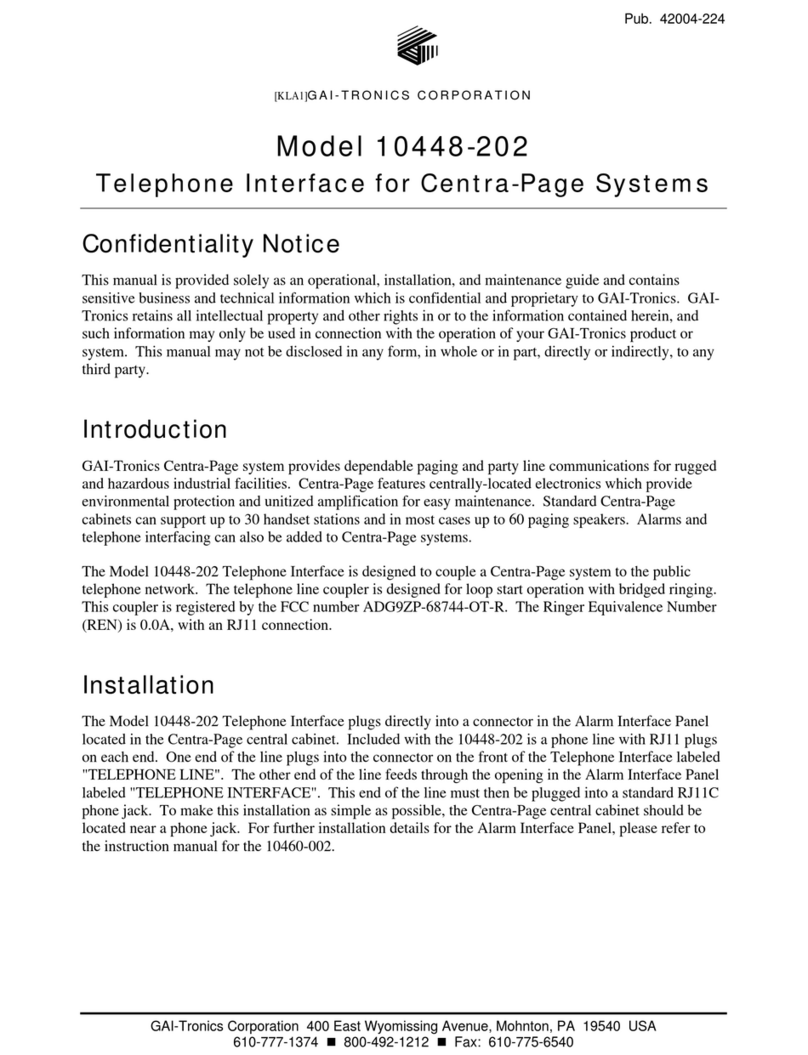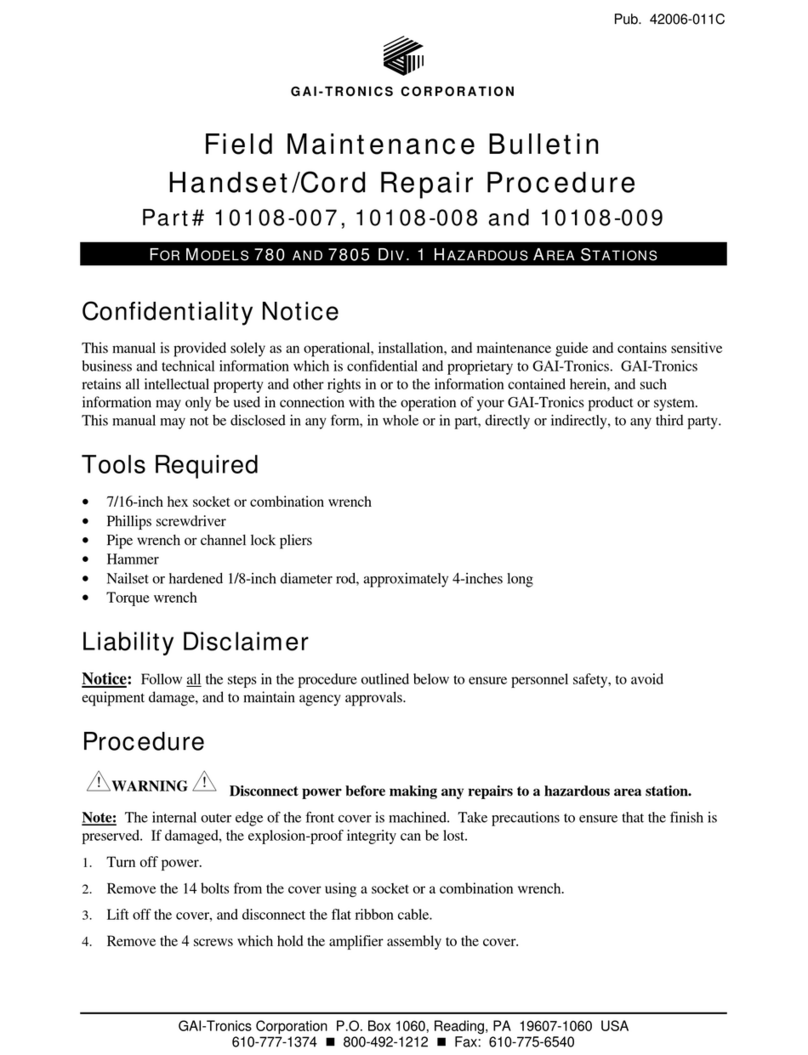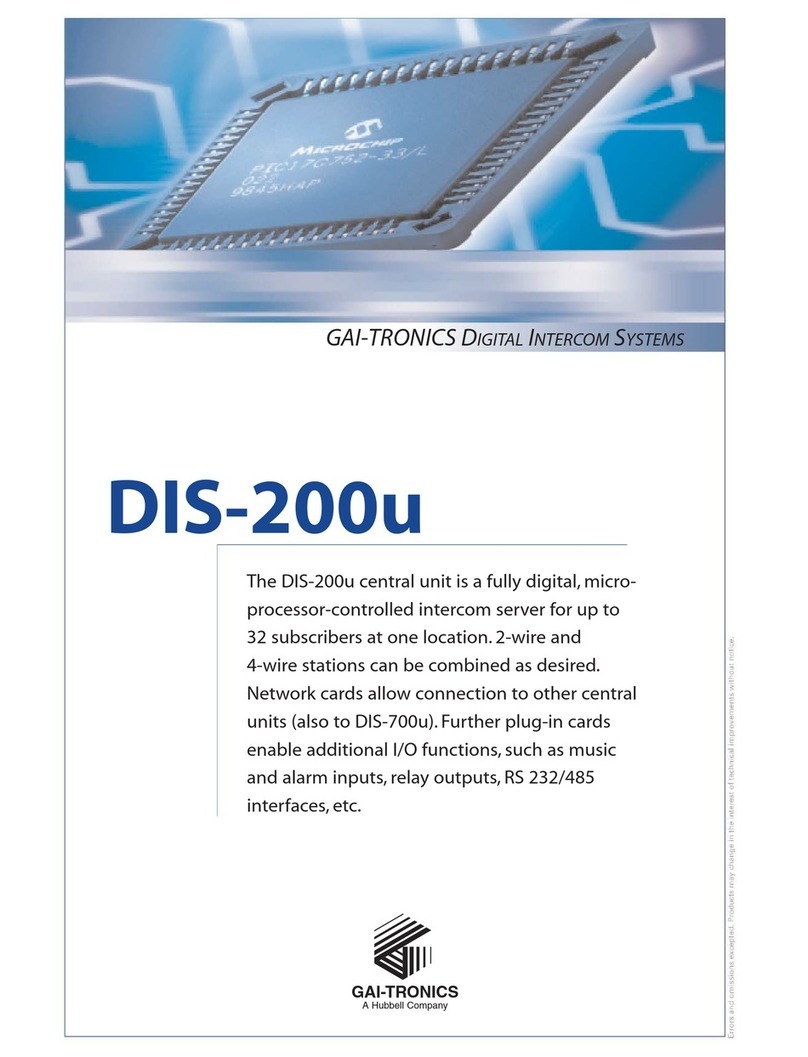
Pub.: 42004-679L2D
GAI-Tronics Corporation 400 E. Wyomissing Ave. Mohnton, PA 19540 USA
610-777-1374 800-492-1212 Fax: 610-796-5954
VISIT WWW.GAI-TRONICS.COM FOR PRODUCT LITERATURE AND MANUALS
GAI-TRONICS® CORPORATION
A HUBBELL COMPANY
Model DEX-101, -102, -201, and -202
Hazardous Area Driller’s Intercom Stations
TABLE OF CONTENTS
Confidentiality Notice.....................................................................................................................1
General Information.......................................................................................................................1
Product Overview ...................................................................................................................................1
System Requirements and Limitations.................................................................................................1
Features and Functions ..........................................................................................................................2
Available Models.....................................................................................................................................2
Description of Major Components........................................................................................................2
Installation ......................................................................................................................................3
General Information...............................................................................................................................3
Mounting..................................................................................................................................................5
Conduit Installation................................................................................................................................5
Field Wire Installation............................................................................................................................6
Power........................................................................................................................................................7
AC Models............................................................................................................................................................7
DC Models............................................................................................................................................................7
Auxiliary Devices ....................................................................................................................................8
System Interconnection..........................................................................................................................9
Operation.......................................................................................................................................10
Digital Models DEX-102 and DEX-202...............................................................................................10
Intercom Communication Modes........................................................................................................................10
Volume Control ..................................................................................................................................................10
Paging .................................................................................................................................................................11
Alarms and Music...............................................................................................................................................11
Analog Models DEX-101 and DEX-201..............................................................................................11
Intercom Communication Modes........................................................................................................................11
Volume Control ..................................................................................................................................................11
Paging .................................................................................................................................................................11
Alarms and Music...............................................................................................................................................11
Maintenance..................................................................................................................................12
General Information.............................................................................................................................12
Troubleshooting....................................................................................................................................12
Specifications ................................................................................................................................13

































